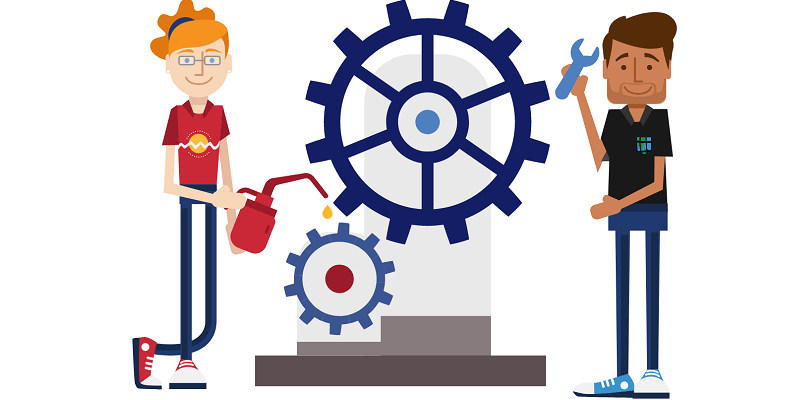Automation opportunities can look different in different industries. A manufacturing company may invest in robots and new equipment, for example, while GIS and IT leaders in public administration would be better off promoting the digital transformation of their organization.
What’s certain is that public administrations must rely on technology if they want to increase their performance and transparency. And all options, from major overarching projects to more specific initiatives, bring about a host of benefits, including:
- Driving employee engagement
- Boosting organizational efficiency
- Improving communication with the public
Read on for some ideas and examples of projects where automation can play a key role in supporting those objectives.
Driving Employee Engagement
The only way to weather the current labour shortage is to invest in employee training and engagement. Effective engagement is the first step in a public organization’s digital transformation. Collaboration, openness and innovation are some of the values that should guide you in rethinking how you go about things. A successful transformation will require you to revisit your processes, many of which were designed around paper and remain paper-based to this day. Low value-added tasks can only benefit from being automated.
Acquiring know-how is one possible strategy for organizations that wish to place their employees at the center of their projects. When you acquire know-how of a technological resource such as the FME solutions, you gain twice. Not only do you boost your employees’ motivation and interest in improving your processes, but you also empower them to implement the new solution (automation tasks included). Case in point: Newton County, Georgia acquired the FME know-how it needed to improve parcel data integration with corporate systems.
Another example is the City of Toronto’s adoption of low-code technology as a way to enable GIS analysts with no programming training to automate the production of maps in pdf reports. This automation helped reduce lead times and increased the overall satisfaction of the City’s various stakeholders.
Boosting Organizational Efficiency
If public organizations are to overcome the labour shortage, they’ll want to use digital solutions to maintain the quality of their services, especially by automating manual and repetitive administrative operations. This kind of automation frees up their employees for other, more complex and rewarding tasks, and also reduces service times at all stages of the process.
Take the Town of Mono, Ontario, for example, which saved 200 hours of manual repetitive work by automating the integration of SaaS data into ArcGIS online.
Meanwhile, the City of Greater Sudbury gained more from optimizing road patrol activity monitoring than we could possibly mention here. Let’s just say that by automating interactions between applications on the ArcGIS platform, the city more than got its investment back. It dramatically cut down on document printing, saved almost 1,000 person/hours, and is now in a position to provide much more accurate information.
Improving Communication With the Public
Implementing a new citizen portal (311) is a major project, and it is also an excellent way to set up a two-way communication system with the public. Such a project, however, could never see the light of day without behind-the-scenes automation.
It is in the best interest of urban towns and cities to share clear information about road works and obstructions in order to improve mobility and reduce congestion. The City of Sherbrooke came up with a creative initiative: to automate the transfer of GIS data to Waze.
Sharing open data not only underscores a public organization’s commitment to transparency, but it also helps community organizations, businesses, researchers and media outlets access and use data. In addition, it drives economic development projects and helps introduce new services in various sectors, such as health and social services, recreation and transportation. Automating the tasks of validating, cleaning, anonymizing and publishing this data to aggregator sites is a great idea, as this work is both repetitive and time-consuming.
Digital transformation holds many exciting opportunities for the future of public administrations: it provides the public with more flexible access to services and allows public administrations to more easily communicate information and receive feedback on the quality of their services. It is also a great way to boost organizational efficiency.
Public service employees who receive training on new technologies are more engaged and play a more active role in reviewing processes and helping create automations that will be deployed behind the scenes. Obviously, a successful digital transformation goes well beyond just the ability to competently perform automations, but that is most certainly a fundamental prerequisite.
At Consortech, we have developed a practical approach to support you in automating and improving your processes. To start out, our ignition kit will help you identify and plan projects to focus on. Then, when the time comes to get your ideas off the page, the coaching and training sessions in our automation kit will empower your employees to independently make your plan a reality. And if you don’t have the time to implement your ideas, don’t sweat it—our team of experts can swoop down and do it for you!
